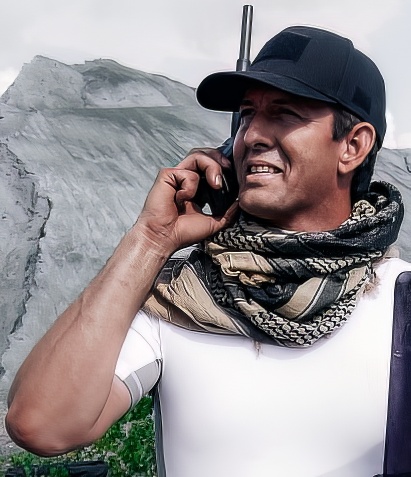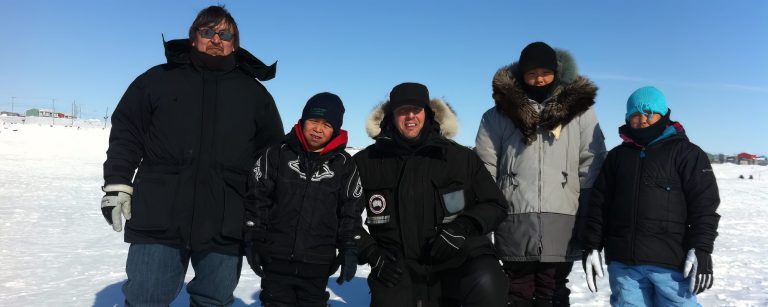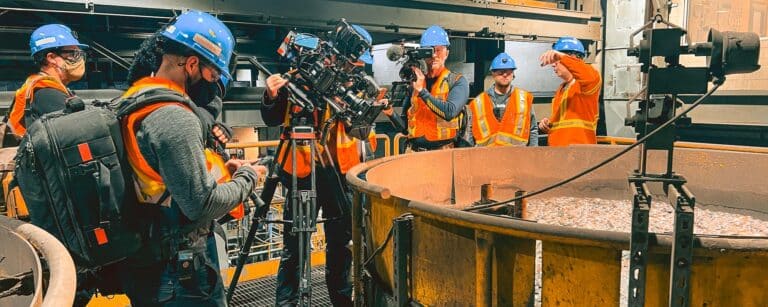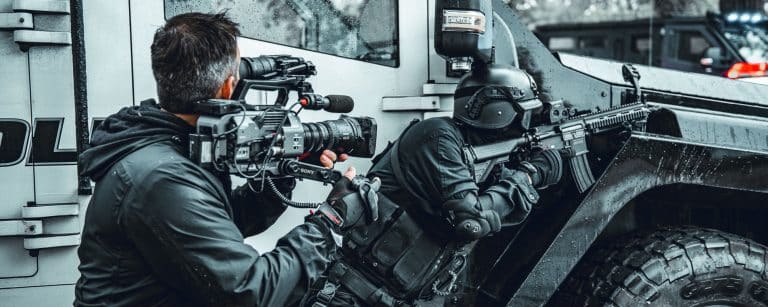From Reel to Real: Navigating Canada's Majestic and Wild Landscapes
Canada’s breathtaking natural landscapes have long attracted filmmakers from around the world. Whether it’s dense forests, towering peaks or tranquil waters, the country boasts a myriad of landscapes. However, venturing into Canada’s wild terrain presents its own special challenges, not least the possibility of encountering bears.
For filmmakers, witnessing the presence of a bear can be a moment of both wonder and anguish. While filming these impressive animals can be a cinematographer’s crowning achievement, the safety of the crew remains the top priority. Immerse yourself in this guide, compiled with advice from Films.solutions – your reliable ally for film production in Canada.
Understanding Bear Behavior
Bears are generally solitary and wary of humans. However, they are also curious creatures. Their behavior can vary according to many factors, including the presence of cubs, the availability of food and their previous experiences with humans.
Understanding bear behavior is essential for any film crew. Bears, by their very nature, are reclusive. They tend to keep their distance from humans, but if threatened or cornered, they may fight back.
Preparation is Key
When venturing into bear territory for a film shoot, knowledge is the most powerful tool in your arsenal. It’s not just about having the best equipment or the most qualified crew; it’s about making sure every member of the team is well versed in bear behavior and safety protocols. At Films.Solutions, we believe that a well-informed team is a safe team. Understanding the nuances of bear behavior can make the difference between a smooth shoot and a dangerous situation. It’s not just about self-preservation, but also about respecting the natural habitat in which we’re privileged to work. By making sure everyone is informed, we’re not only protecting our team, we’re also respecting the flora and fauna that live in these places.
If you take a closer look at this article, you’ll find a detailed, practical guide. We’ll describe the subtleties of bear behavior, dispel common myths and suggest practical steps to keep you safe. From understanding the types of bears you may encounter, to the meaning of their body language, to the equipment that can be your ally in these terrains, we’ve got you covered. Films.Solutions is dedicated to providing you with the knowledge and tools you need to make every film shot in bear country a safe and successful one. Stay informed and empower yourself with the information every crew member should have before venturing out into the wild.
Imagine you’re behind the camera, completely absorbed in capturing the perfect scene. The lighting is perfect and everything is going well. But you’re in bear country, and while you’re focused on your work, it’s essential to remain attentive to your surroundings. That unexpected rustling in the bushes? It could be a bear.
Before you even set foot in such places, it’s essential to arm yourself with knowledge. Films.Solutions doesn’t just help with the logistics of film production; we’re here to make sure you’re mentally and physically equipped for the wild. We believe it’s essential to be well-informed. Know how to recognize the signs of a bear’s presence, whether paw prints or droppings. Understand their behavior, so that if you encounter one, you can react appropriately.
Remember, it’s not about inspiring fear, but about fostering respect for these majestic creatures and their habitat. It’s about ensuring that you can concentrate on your work, knowing that you’re ready to deal with the unexpected. As a member of a film crew, you have a responsibility not only to your team, but also to yourself. Adopt the right frame of mind, be vigilant and always put safety first.
- Educate Your Crew: Ensure everyone is aware of bear behavior and safety protocols.
- Make Noise: When moving through areas where visibility is low or where the sound of running water or wind might mask your approach, make noise. This could be in the form of talking, singing, or clapping. This alerts bears to your presence and allows them to move away, avoiding surprise encounters.
- Travel in Groups: Bears are less likely to approach larger groups of people. The more people there are, the more noise you’ll naturally make, and bears will typically avoid such disturbances.
- Stay on Designated Trails: By staying on established paths, you reduce the likelihood of stumbling into areas where bears might be feeding or resting.
- Avoid Dawn and Dusk: Bears are most active during early morning and late evening. If possible, plan your hikes or other activities outside of these times.
- Store Food Properly: Always store food, toiletries, and garbage in bear-proof containers or hang them from a tree at least 10 feet off the ground and 4 feet away from the tree trunk. Never leave food or garbage unattended.
- Keep a Clean Camp: Ensure that your camping area is clean and free from food scraps. Wash dishes and cooking utensils immediately after use.
- Avoid Animal Carcasses: If you come across an animal carcass, leave the area immediately and report it to park officials or local authorities. It might be a food source for a bear.
- Carry Bear Spray: Bear spray is a highly effective deterrent when used correctly. Make sure it’s easily accessible and that you know how to use it.
- Keep Pets on a Leash: Dogs can provoke bears and might also bring them back to you. If you bring a pet, ensure it’s always under control.
- Know the Signs: Be aware of signs of bear activity, such as tracks, scat, diggings, torn-up logs, and turned-over rocks. If you see fresh signs of bear activity, leave the area.
- Avoid Wearing Scented Products: Perfumes, scented lotions, and other fragrant products can attract bears. Stick to unscented varieties when in bear country.
- Educate Yourself: Before going into bear territory, educate yourself about the types of bears in the area and their behavior. Different species might require different precautions.
Bear Counts of Canada: A Province-by-Province Breakdown
Black Bears:
- Canada-wide: Over 450,000
- Quebec: 70,000 to 85,000
- Ontario: 75,000 to 100,000
- New Brunswick: 17,000
- Manitoba: 25,000 to 30,000
- Saskatchewan: 40,000
- Alberta: 40,000
- British Columbia: 120,000 to 150,000
- Newfoundland: 10,000
- Labrador: 5,000 to 6,000
- Yukon, Northwest Territories, and Nunavut: 5,000 to 10,000
Brown Bears (Grizzly):
- British Columbia: 15,000
- Yukon: 6,000 to 7,000
- Northwest Territories: 5,000 to 7,000
- Alberta: Less than 1,000
White Bears (Polar Bears):
- Canada-wide: 12,000 to 15,000
Encounter Protocols:
Encountering one of these magnificent creatures can be both awe-inspiring and intimidating. If you find yourself face-to-face with a bear, here’s how to handle the situation.
Stay Calm and Assess the Situation: Your initial reaction might be to panic, but it’s crucial to remain as calm as possible. Take a deep breath and quickly assess the bear’s behavior and your surroundings. Is the bear aware of your presence? Is it displaying signs of aggression or merely going about its business? Understanding the bear’s demeanor can guide your next steps.
Speak Softly and Firmly: If the bear has noticed you but isn’t acting aggressively, let it know you’re human. Speak in a soft yet firm voice, saying something like, “Hey bear, it’s okay.” Avoid direct eye contact, which can be perceived as a threat.
Avoid Sudden Movements: Quick or abrupt movements can startle the bear. Instead, move slowly and deliberately, ensuring that you’re not blocking the bear’s escape route.
Stay Grouped: If you’re with others, gather together to appear larger and more intimidating to the bear. This can deter the bear from approaching.
Do Not Run: This is crucial. Running can trigger the bear’s predatory instincts, and they can move surprisingly fast. Instead, if the bear remains non-aggressive, slowly back away while facing the bear, ensuring you’re moving towards a safe location.
Use Bear Spray if Necessary: If the bear shows signs of aggression and you have bear spray on hand, be prepared to use it. However, only do so when the bear is within a few meters, aiming for its face. Ensure you’re familiar with how to use bear spray correctly before venturing into bear country.
In the Rare Event of an Attack: If it’s a grizzly bear and you’re being attacked in a defensive manner (e.g., you surprised the bear), play dead. Lay flat on your stomach, spread your legs apart to make it harder for the bear to turn you over, and cover the back of your neck with your hands. Once the bear leaves, wait a few minutes to ensure it’s gone and then move away from the area. If, however, a black bear or a grizzly perceives you as prey and is intent on a predatory attack, fight back with everything you’ve got. Target the bear’s eyes and nose.
- Avoid Direct Eye Contact: Bears may perceive this as a threat.
- Never Approach a Bear: Especially if it has cubs. A mother bear is particularly protective and can become aggressive if she feels her cubs are threatened.
- Do Not Feed the Bear: Feeding bears makes them associate humans with food, which can lead to future conflicts.
- Avoid Sudden Movements: Quick movements can startle a bear and provoke a reaction.
- Do Not Climb Trees: Both black bears and grizzlies can climb trees.
- Never Turn Your Back: Always face the bear and slowly back away, keeping it in your sight.
- Avoid Yelling or Screaming: Instead, speak calmly and firmly to let the bear know you're human.
- Do Not Rely Solely on Bear Bells: Their effectiveness is debated among experts. It's better to make human noises, like talking or clapping.
- Avoid Trapping the Bear: Ensure the bear has an escape route. Cornering a bear can make it feel threatened and lead to an aggressive response.
- Do Not Discard Food Waste: If camping or picnicking, properly store and dispose of food waste to avoid attracting bears.
- Never Assume a Bear's Behavior: Just because a bear isn't showing aggression doesn't mean it's safe to approach or that it won't become aggressive.
A grizzly bear
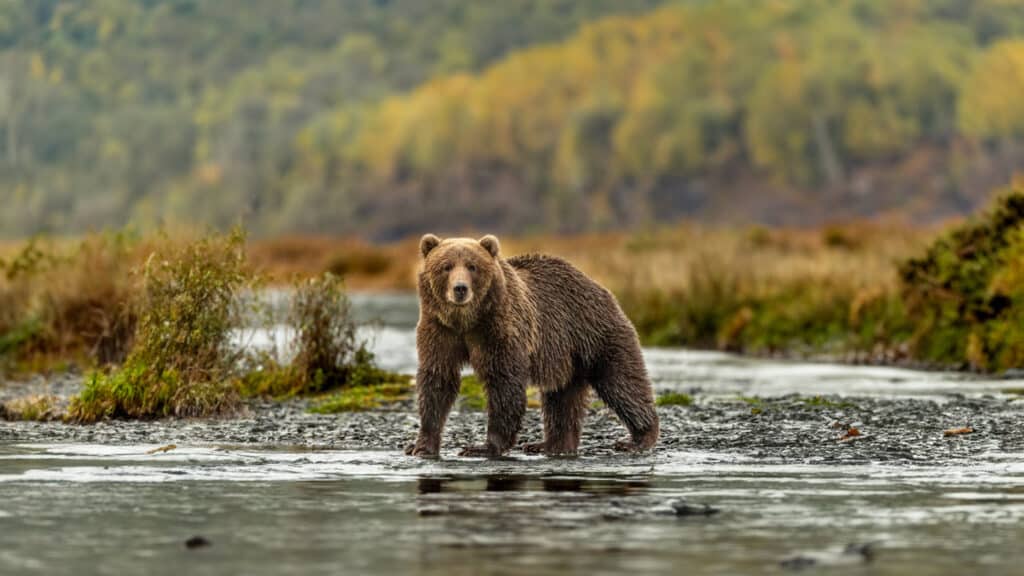
Film Crew
In the heart of the Canadian wilderness, film crews are often so absorbed in their work that they can become unwittingly vulnerable to nature’s surprises, particularly unexpected encounters with bears. It’s during these critical moments of concentration, when preparing a shot or capturing a scene, that crews can benefit from specialized supervision. Films.Solutions understands this dynamic and steps in to ensure that the crew can concentrate on their work while remaining safe. By providing expert advice, safety protocols and on-site assistance, Films.Solutions acts as the team’s watchful eye, ensuring that every shoot is both productive and safe in bear country.
On-Set Protocols in Bear Country
When Filming Bears
Capturing bears on film is exhilarating but remember:
- Use Long Lenses: This allows you to maintain a safe distance.
- Never Approach a Bear: No shot is worth the risk.
- Be Respectful: Remember, you’re in their home.
Having specific on-set protocols can be a lifesaver.
Designated Watchers
Consider appointing a few crew members as designated watchers during shoots, especially in dense bear-populated areas. Their primary job would be to keep an eye out for bears and other wildlife, ensuring that the crew can work without unexpected interruptions.
Safe Zones
Establish clear safe zones on set. In case of a bear sighting, everyone should know where to go. This could be designated vehicles, tents, or any other safe and enclosed area.
Educate the Crew
Before starting the shoot, consider having a brief session on bear safety. While you might be familiar with the protocols, someone else on the crew might not be. It’s always best to ensure everyone is on the same page.
Technology Meets Wilderness: Drones and Bears
Drones in Bear Territory
With the rise of drone cinematography, it’s essential to understand how these devices might affect bears and other wildlife. While drones can capture breathtaking aerial views without disturbing the ground below, the noise and presence can stress out bears. If filming bears directly, always maintain a considerable distance and monitor the bear’s behavior closely. If they show any sign of stress or aggression, it’s time to fly the drone out of the area.
Communication is Key
In remote locations, ensure that your crew is equipped with satellite phones or walkie-talkies. In the event of a bear encounter, being able to communicate with the rest of the team can be crucial, especially if you need to alert them or call for help.
Post-Production: A Responsibility to Portray Bears Rightly
Once you’ve captured the majestic wilderness and perhaps even the bears, it’s crucial to ensure that the portrayal is accurate and respectful in the final product. Avoid sensationalizing bear encounters or portraying them as aggressive without context. As filmmakers, we have the power to shape perceptions, and it’s our duty to depict wildlife in a truthful and respectful manner.
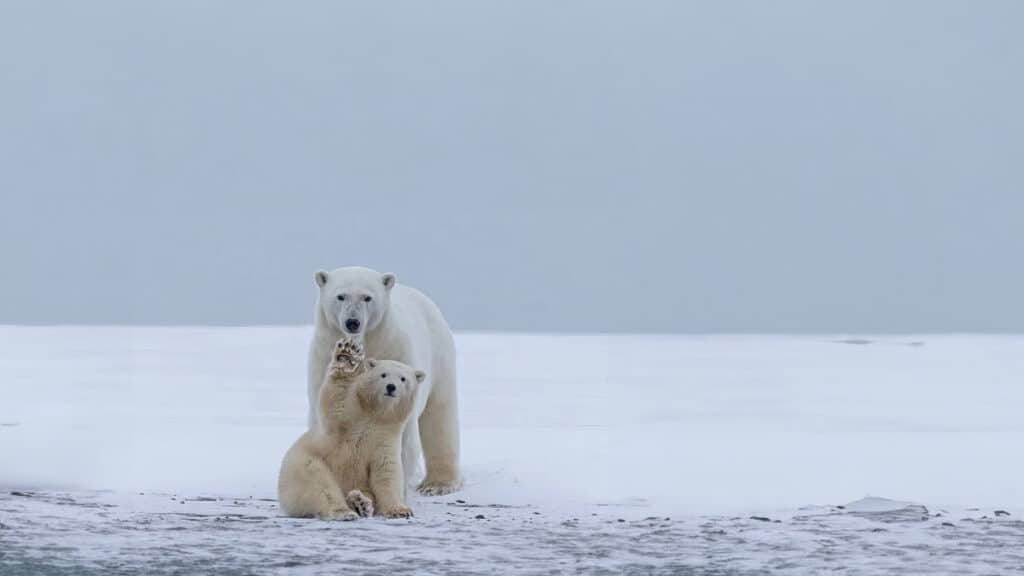
Respecting Indigenous Knowledge
Collaborate with Local Communities
Many Indigenous communities in Canada have lived in harmony with bears and the land for millennia. Their knowledge and understanding of the local ecosystems are profound. Collaborating with these communities can provide valuable insights, not only about bears but also about the land and its significance.
Cultural Sensitivities in Filming
If you’re filming in areas of cultural significance, always seek permission and guidance from the local Indigenous communities. Their understanding of the environment can guide filmmakers in respecting sacred sites and ensuring that the portrayal of the land and its inhabitants is accurate and respectful.
Collaborating with Local Experts
Films.solutions, with its vast experience managing film productions in Canada, strongly recommends collaborating with local wildlife experts or hiring a guide when filming in bear territories. Their knowledge can be invaluable, ensuring not just the safety of the crew but also minimizing the disturbance to local wildlife.
- Menstruating Women Attract Bears: There's a myth that bears, especially grizzlies, are attracted to the odor of menstruating women. Scientific studies have not found any solid evidence to support this claim.
- Bears Cannot Run Downhill: Contrary to popular belief, bears, especially grizzly bears, can run downhill very fast. They are agile creatures capable of reaching speeds up to 35 mph or more on any terrain.
- Play Dead with All Bears: While playing dead might work during a defensive attack by a grizzly bear, it's not recommended for black bears. Each bear species and encounter requires different responses.
- All Bears Hibernate: While bears are known for hibernation, not all bears hibernate in the traditional sense. Some bears, especially in warmer regions, go into a lighter state of dormancy known as torpor.
- Bears are Strictly Carnivores: While bears are often depicted as meat-eaters, many species, like the black bear, have an omnivorous diet that includes plants, berries, and insects.
- Bears are Naturally Aggressive: Many people believe that bears are aggressive creatures always looking for a fight. In reality, most bears prefer to avoid human interaction and are not inherently aggressive.
- Bears Have Poor Eyesight: Another myth is that bears have bad eyesight, similar to the myth about bulls. In truth, bears have good eyesight, comparable to humans, and are also excellent at detecting movement.
- Bear Bells Deter Bears: Some people believe that wearing "bear bells" will deter bears. However, the effectiveness of these bells is debated. It's often recommended to make human noises, like talking or singing, to alert bears to your presence.
- Rubbing Garlic or Chili on Clothes Repels Bears: There's no scientific evidence to back this claim. Bears have an excellent sense of smell, and masking scents rarely work.
- Bears are Attracted to Campfires: Some believe that the smell of a campfire attracts bears. In reality, bears are generally wary of fires, but the food and food odors in a campsite might attract them.
It's essential to differentiate between myths and facts when it comes to bears, especially for those venturing into bear country. Proper knowledge can ensure safety for both humans and bears.
Essential Bear Safety Gear for Film Crews in the Wild
When venturing into bear country, especially with a film crew where there might be equipment and food that could attract bears, it’s essential to have safety equipment on hand. Here’s a list of safety equipment to consider:
Bear Spray: This is a must-have. Bear spray is a type of pepper spray specifically formulated to deter bears. Ensure that everyone knows how to use it and keeps it easily accessible, not buried in a backpack.
Bear Bells: Worn on clothing or equipment, these bells make noise as you move, alerting bears to human presence.
Bear-Proof Containers: These are essential for storing food, toiletries, and any other scented items. They’re designed to be difficult for bears to open.
Bear-Resistant Trash Bags: If you’re generating waste, especially food waste, store it in bear-resistant bags until it can be properly disposed of.
Electric Bear Fences: For base camps or long shooting locations, a portable electric fence can provide a deterrent for curious bears.
Bear Deterrent Alarms: These can be set up around a camp to go off if a bear approaches, scaring the bear away.
Flares and Air Horns: Loud noises can deter bears. Flares and air horns can be used to scare off a bear that comes too close.
Bear Safety Whistles: These are loud whistles that can alert bears to human presence and also signal distress to other humans.
Firearms: In some extreme cases, especially in very remote areas, carrying a firearm might be considered. However, using firearms requires specific training and should be a last resort. Bear spray has been shown to be more effective in many cases.
Bear Safety Training: While not equipment, ensuring that everyone on the crew has undergone bear safety training is crucial. Everyone should know how to react in case of an encounter.
First Aid Kit: While this is a general safety item, it’s essential in case of any injuries, whether related to a bear encounter or not.
Communication Devices: Satellite phones or radios can be critical, especially in remote areas, to call for help if necessary.
Bear Identification Guide: Not all bears behave the same way. Knowing the difference between, say, a black bear and a grizzly bear can dictate how you should react during an encounter.
Bear Deterrent Mat: These mats can be placed around the perimeter of a campsite. The small spikes on the mat are uncomfortable for bears to step on, deterring them from entering an area.
Remember, the goal with all of this equipment is to prevent encounters and conflicts with bears, not to harm them. It’s about ensuring the safety of both humans and bears.
Final Thoughts
Making a film in Canada’s wilderness is an exhilarating experience, offering landscapes of unparalleled beauty and the chance to capture nature in its raw state. However, you also have to take care to ensure safety and respect for the ecosystem. The presence of majestic creatures such as bears adds to the appeal of this experience, but demands caution and respect.
Every cinematographer dreams of the perfect shot, but this must never be at the expense of personal safety or the well-being of wildlife. As we venture out into the wild with our cameras and drones, let’s commit to being responsible, learning and respecting the balance of nature.
Let’s not forget that wild nature doesn’t adapt to us, we adapt to it. And it is in this adaptation, in this learning, that the true essence of filmmaking lies.
For those in the film industry looking for expert guidance in navigating Canada’s vast and diverse landscape, Films.solutions is ready to help. With an experienced team familiar with film production and wilderness safety, you’re in good hands.
Stay safe, stay inspired and keep capturing the beauty of nature!

